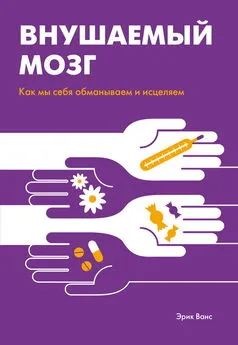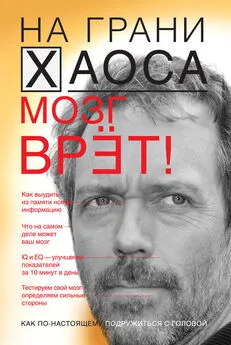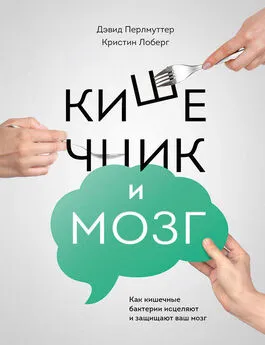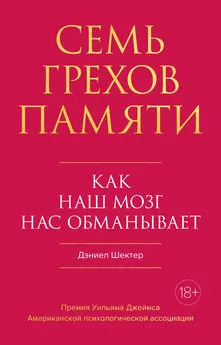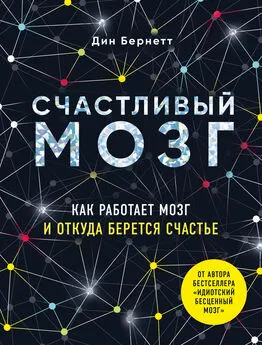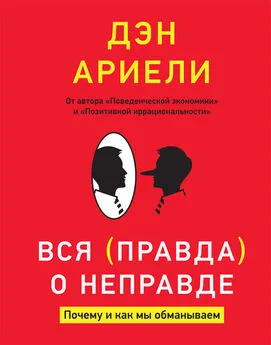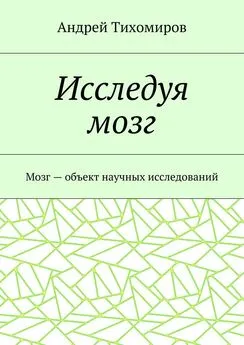Эрик Ванс - Внушаемый мозг. Как мы себя обманываем и исцеляем
- Название:Внушаемый мозг. Как мы себя обманываем и исцеляем
- Автор:
- Жанр:
- Издательство:Манн, Иванов и Фербер
- Год:2019
- Город:Москва
- ISBN:978-5-00117-610-7
- Рейтинг:
- Избранное:Добавить в избранное
-
Отзывы:
-
Ваша оценка:
Эрик Ванс - Внушаемый мозг. Как мы себя обманываем и исцеляем краткое содержание
На русском языке публикуется впервые.
Внушаемый мозг. Как мы себя обманываем и исцеляем - читать онлайн бесплатно ознакомительный отрывок
Интервал:
Закладка:
Mason, A. A. «Case of Congenital Ichthyosiform Erythrodermia of Brocq Treated by Hypnosis». British Medical Journal 2, no. 4781 (August 23, 1952): 422–423.
Mason, A. A. «Ichthyosis and Hypnosis». British Medical Journal 2, no. 4930 (July 2, 1955): 57–58.
Prentiss, D. W. «Hypnotism in Animals». American Naturalist 16, no. 9 (1882): 715–727.
Rainville, P., G. H. Duncan, D. D. Price, B. Carrier, and M. C. Bushnell. «Pain Affect Encoded in Human Anterior Cingulate but Not Somatosensory Cortex». Science 277, no. 5328 (August 15, 1997): 968–971.
Schrenck-Notzing, Albert von. «Phenomena of Materialisation: A Contribution to the Investigation of Mediumistic Teleplastics (1923)». Public Domain Review. Accessed April 25, 2016. https://publicdomainreview.org/collections/phenomena-of-materialisation-1923/.
Scott, Sir Walter. Delphi Complete Works of Sir Walter Scott (Illustrated). Delphi Classics, 2013.
Shor, Ronald E., and Carota. O. E. «Harvard Group Scale of Hypnotic Susceptibility, Form A». Consulting Psychologists Press, 1962.
Sommer, Andreas. «Policing Epistemic Deviance: Albert von Schrenck-Notzing and Albert Moll». Medical History 56, no. 2 (April 2012): 255–276. doi: 10.1017/mdh.2011.36.
Spiegel, H. «An Eye-Roll Test for Hypnotizability». American Journal of Clinical Hypnosis 15, no. 1 (July 1972): 25–28. doi: 10.1080/00029157.1972.10402206.
Tellegen, Auke, and Gilbert Atkinson. «Openness to Absorbing and Self-Altering Experiences (‘Absorption’), a Trait Related to Hypnotic Susceptibility». Journal of Abnormal Psychology 83, no. 3 (1974): 268–277. doi: 10.1037/h0036681.
U. K. College of Hypnosis and Hypnotherapy. «The History of Hypnotism for Childbirth: Excerpt From a Book Chapter by Platonov». October 22, 2010. https://www.ukhypnosis.com/2010/10/22/the-history-of-hypnotism-in-childbirth-platonov/.
Weitzenhoffer, A. M. and Hilgard, E. R. «Stanford Hypnotic Susceptibility Scale, Form C». Consulting Psychologists Press, 1962.
White, M. M. «The Physical and Mental Traits of Individuals Susceptible to Hypnosis». Journal of Abnormal and Social Psychology 25, no. 3 (1930): 293–298. doi: 10.1037/h0075216.
Bernstein, Daniel M., and Elizabeth F. Loftus. «How to Tell If a Particular Memory Is True or False». Perspectives on Psychological Science 4, no. 4 (July 1, 2009): 370–374. doi: 10.1111/j.1745–6924.2009.01140.x.
Braun, Kathryn A., Rhiannon Ellis, and Elizabeth F. Loftus. «Make My Memory: How Advertising Can Change Our Memories of the Past». Psychology and Marketing 19, no. 1 (January 1, 2002): 1–23. doi: 10.1002/mar.1000.
Clancy, Susan A., Richard J. McNally, Daniel L. Schacter, Mark F. Lenzenweger, and Roger K. Pitman. «Memory Distortion in People Reporting Abduction by Aliens». Journal of Abnormal Psychology 111, no. 3 (August 2002): 455–461.
Committee on Scientific Approaches to Understanding and Maximizing the Validity and Reliability of Eyewitness Identification in Law Enforcement and the Courts; Committee on Science, Technology, and Law; Policy and Global Affairs; Committee on Law and Justice; Division of Behavioral and Social Sciences and Education; and National Research Council. Identifying the Culprit: Assessing Eyewitness Identification. National Academies Press, 2015.
Courtney Hritz, Amelia, Caisa Elizabeth Royer, Rebecca K. Helm, Kayla A. Burd, Karen Ojeda, and Stephen J. Ceci. «Children’s Suggestibility Research: Things to Know Before Interviewing a Child». Anuario de Psicología Jurídica 25 (2015). http://www.redalyc.org/resumen.oa?id=315040291002.
Dasse, Michelle N., Gary R. Elkins, and Charles A. Weaver. «Hypnotizability, Not Suggestion, Influences False Memory Development». International Journal of Clinical and Experimental Hypnosis 63, no. 1 (2015): 110–128. doi: 10.1080/00207144.2014.961880.
Dewhurst, Stephen A., Rachel J. Anderson, and Lauren M. Knott. «A Gender Difference in the False Recall of Negative Words: Women DRM More Than Men». Cognition and Emotion 26, no. 1 (2012): 65–74. doi: 10.1080/02699931.2011.553037.
Goldstein, Eleanor, and Mark Pendergrast. «The Wrongful Conviction of Bruce Perkins». Accessed April 27, 2016. https://ncrj.org/wp-content/uploads/sponsored/Perkins.
Howe, Mark L. «Children (but Not Adults) Can Inhibit False Memories». Psychological Science 16, no. 12 (December 1, 2005): 927–931. doi: 10.1111/j.1467–9280.2005.01638.x.
Hunt, Kathryn L., and Lars Chittka. «Merging of Long-Term Memories in an Insect». Current Biology 25, no. 6 (March 16, 2015): 741–745. doi: 10.1016/j.cub.2015.01.023.
Laney, Cara, and Elizabeth F. Loftus. «Recent Advances in False Memory Research». South African Journal of Psychology 43, no. 2 (June 1, 2013): 137–146. doi: 10.1177/0081246313484236.
Lanning, Kenneth V. Investigator’s Guide to Allegations of «Ritual» Child Abuse. Behavioral Science Unit, National Center for the Analysis of Violent Crime, Federal Bureau of Investigation, FBI Academy, 1992.
Loftus, E. F., and J. E. Pickrell. «The Formation of False Memories». Psychiatric Annals 25:12 (December 1995): 720–725.
Loftus, E. F., D. G. Miller, and H. J. Burns. «Semantic Integration of Verbal Information Into a Visual Memory». Journal of Experimental Psychology: Human Learning and Memory 4, no. 1 (January 1978): 19–31.
McFarlane, Felicity, Martine B. Powell, and Paul Dudgeon. «An Examination of the Degree to Which IQ, Memory Performance, Socio-Economic Status and Gender Predict Young Children’s Suggestibility». Legal and Criminological Psychology 7, no. 2 (September 1, 2002): 227–239. doi: 10.1348/135532502760274729.
Meyersburg, Cynthia A., Ryan Bogdan, David A. Gallo, and Richard J. McNally. «False Memory Propensity in People Reporting Recovered Memories of Past Lives». Journal of Abnormal Psychology 118, no. 2 (May 2009): 399–404. doi: 10.1037/a0015371.
Morgan III, C. A., Steven Southwick, George Steffian, Gary A. Hazlett, and Elizabeth F. Loftus. «Misinformation Can Influence Memory for Recently Experienced, Highly Stressful Events». International Journal of Law and Psychiatry 36, no. 1 (January 2013): 11–17. doi: 10.1016/j.ijlp.2012.11.002.
National Institutes of Health. «PTSD: A Growing Epidemic». NIH MedlinePlus 4, no. 1 (Winter 2009): 10–14. Accessed April 27, 2016. https://www.nlm.nih.gov/medlineplus/magazine/issues/winter09/articles/winter09pg10-14.html.
Neisser, Ulric, and Nicole Harsch. «Phantom Flashbulbs: False Recollections of Hearing the News About Challenger». In Affect and Accuracy in Recall: Studies of «Flashbulb» Memories, edited by E. Winograd and U. Neisser, 9–31. Emory Symposia in Cognition, 4. Cambridge University Press, 1992.
Okuda, Jiro, Toshikatsu Fujii, Hiroya Ohtake, Takashi Tsukiura, Kazuyo Tanji, Kyoko Suzuki, Ryuta Kawashima, Hiroshi Fukuda, Masatoshi Itoh, and Atsushi Yamadori. «Thinking of the Future and Past: The Roles of the Frontal Pole and the Medial Temporal Lobes». NeuroImage 19, no. 4 (August 2003): 1369–1380.
Pace-Schott, Edward F., Anne Germain, and Mohammed R. Milad. «Sleep and REM Sleep Disturbance in the Pathophysiology of PTSD: The Role of Extinction Memory». Biology of Mood and Anxiety Disorders 5 (2015): 3. doi: 10.1186/s13587-015-0018-9.
Patihis, Lawrence, Steven J. Frenda, Aurora K. R. LePort, Nicole Petersen, Rebecca M. Nichols, Craig E. L. Stark, James L. McGaugh, and Elizabeth F. Loftus. «False Memories in Highly Superior Autobiographical Memory Individuals». Proceedings of the National Academy of Sciences 110, no. 52 (December 24, 2013): 20947–20952. doi: 10.1073/pnas.1314373110.
Price, Heather L., and Thomas L. Phenix. «True (but Not False) Memories Are Subject to Retrieval-Induced Forgetting in Children». Journal of Experimental Child Psychology 133 (May 2015): 1–15. doi: 10.1016/j.jecp.2015.01.009.
Ramirez, Steve, Xu Liu, Pei-Ann Lin, Junghyup Suh, Michele Pignatelli, Roger L. Redondo, Tomás J. Ryan, and Susumu Tonegawa. «Creating a False Memory in the Hippocampus». Science 341, no. 6144 (July 26, 2013): 387–391. doi: 10.1126/science.1239073. https://www.asam.org/docs/default-source/advocacy/opioid-addiction-disease-facts-figures.
Reyna, V. F., and C. J. Brainerd. «Fuzzy-Trace Theory and False Memory: New Frontiers». Journal of Experimental Child Psychology 71, no. 2 (November 1998): 194–209. doi: 10.1006/jecp.1998.2472.
Riba, J., M. Valle, F. Sampedro, A. Rodríguez-Pujadas, S. Martínez-Horta, J. Kulisevsky, and A. Rodríguez-Fornells. «Telling True From False: Cannabis Users Show Increased Susceptibility to False Memories». Molecular Psychiatry 20, no. 6 (June 2015): 772–777. doi: 10.1038/mp.2015.36.
Roediger, Henry L., Jason M. Watson, Kathleen B. McDermott, and David A. Gallo. «Factors That Determine False Recall: A Multiple Regression Analysis». Psychonomic Bulletin and Review 8, no. 3 (September 2001): 385–407. doi: 10.3758/BF03196177.
Schacter, Daniel L. The Seven Sins of Memory: How the Mind Forgets and Remembers. 1st ed. Mariner Books, 2002.
Zhu, Bi, Chuansheng Chen, Elizabeth F. Loftus, Chongde Lin, Qinghua He, Chunhui Chen, He Li, Gui Xue, Zhonglin Lu, and Qi Dong. «Individual Differences in False Memory From Misinformation: Cognitive Factors». Memory 18, no. 5 (July 2010): 543–555. doi: 10.1080/09658211.2010.487051.
Amanzio, M., and F. Benedetti. «Neuropharmacological Dissection of Placebo Analgesia: Expectation-Activated Opioid Systems Versus Conditioning-Activated Specific Subsystems». Journal of Neuroscience 19, no. 1 (January 1, 1999): 484–494.
American Society of Addiction Medicine. «Opioid Addiction: 2016 Facts and Figures». Accessed May 2, 2016. http://www.asam.org/docs/default-source/advocacy/opioid-addiction-disease-facts-figures.pdf.
Ariel, Gideon, and William Saville. «Anabolic Steroids: The Physiological Effects of Placebos». Medicine and Science in Sports and Exercise 4, no. 2 (1972): 124–126.
Beedie, Christopher J., and Abigail J. Foad. «The Placebo Effect in Sports Performance: A Brief Review». Sports Medicine 39, no. 4 (2009): 313–329.
Bradford, Andrea, and Cindy Meston. «Correlates of Placebo Response in the Treatment of Sexual Dysfunction in Women: A Preliminary Report». Journal of Sexual Medicine 4, no. 5 (September 2007): 1345–1351. doi: 10.1111/j.1743–6109.2007.00578.x.
Buscemi, N., B. Vandermeer, C. Friesen, L. Bialy, M. Tubman, M. Ospina, T. P. Klassen, and M. Witmans. «Manifestations and Management of Chronic Insomnia in Adults: Summary». June 2005. http://www.ncbi.nlm.nih.gov/books/NBK11906.
Childress, Anna Rose, Ronald N. Ehrman, Ze Wang, Yin Li, Nathan Sciortino, Jonathan Hakun, William Jens, et al. «Prelude to Passion: Limbic Activation by ‘Unseen’ Drug and Sexual Cues». PLOS ONE3, no. 1 (2008): e1506. doi: 10.1371/journal.pone.0001506.
Cole-Harding, Shirley, and Vicki J. Michels. «Does Expectancy Affect Alcohol Absorption?» Addictive Behaviors 32, no. 1 (January 2007): 194–198. doi: 10.1016/j.addbeh.2006.03.042.
Colloca, Luana, and Franklin G. Miller. «The Nocebo Effect and Its Relevance for Clinical Practice». Psychosomatic Medicine 73, no. 7 (September 2011): 598–603. doi: 10.1097/PSY.0b013e3182294a50.
Corder, G., S. Doolen, R. R. Donahue, M. K. Winter, B. L. Jutras, Y. He, X. Hu, et al. «Constitutive μ-Opioid Receptor Activity Leads to Long-Term Endogenous Analgesia and Dependence». Science 341, no. 6152 (September 20, 2013): 1394–1399. doi: 10.1126/science.1239403.
Crum, Alia J., and Ellen J. Langer. «Mind-Set Matters: Exercise and the Placebo Effect». Psychological Science 18, no. 2 (February 2007): 165–171. doi: 10.1111/j.1467–9280.2007.01867.x.
Читать дальшеИнтервал:
Закладка:
